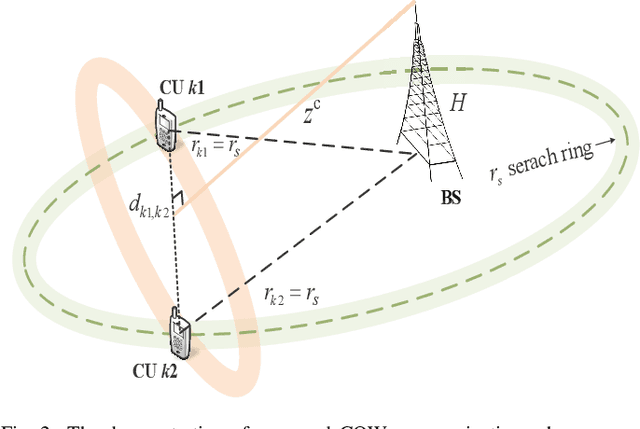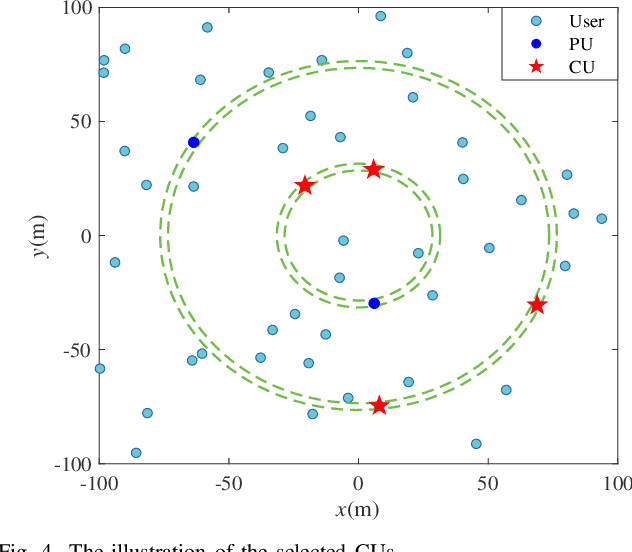Jinyang Lin
Precoding Based Downlink OAM-MIMO Communications with Rate Splitting
Jul 31, 2024Abstract:Orbital angular momentum (OAM) and rate splitting (RS) are the potential key techniques for the future wireless communications. As a new orthogonal resource, OAM can achieve the multifold increase of spectrum efficiency to relieve the scarcity of the spectrum resource, but how to enhance the privacy performance imposes crucial challenge for OAM communications. RS technique divides the information into private and common parts, which can guarantee the privacies for all users. In this paper, we integrate the RS technique into downlink OAM-MIMO communications, and study the precoding optimization to maximize the sum capacity. First, the concentric uniform circular arrays (UCAs) are utilized to construct the downlink transmission framework of OAM-MIMO communications with RS. Particularly, users in the same user pair utilize RS technique to obtain the information and different user pairs use different OAM modes. Then, we derive the OAM-MIMO channel model, and formulate the sum capacity maximization problem. Finally, based on the fractional programming, the optimal precoding matrix is obtained to maximize the sum capacity by using quadratic transformation. Extensive simulation results show that by using the proposed precoding optimization algorithm, OAM-MIMO communications with RS can achieve higher sum capacity than the traditional communication schemes.
Cooperative Orbital Angular Momentum Wireless Communications
Jul 31, 2024



Abstract:Orbital angular momentum (OAM) mode multiplexing has the potential to achieve high spectrum-efficiency communications at the same time and frequency by using orthogonal mode resource. However, the vortex wave hollow divergence characteristic results in the requirement of the large-scale receive antenna, which makes users hardly receive the OAM signal by size-limited equipment. To promote the OAM application in the next 6G communications, this paper proposes the cooperative OAM wireless (COW) communication scheme, which can select the cooperative users (CUs) to form the aligned antennas by size-limited user equipment. First, we derive the feasible radial radius and selective waist radius to choose the CUs in the same circle with the origin at the base station. Then, based on the locations of CUs, the waist radius is adjusted to form the receive antennas and ensure the maximum intensity for the CUs. Finally, the cooperative formation probability is derived in the closed-form solution, which can depict the feasibility of the proposed COW communication scheme. Furthermore, OAM beam steering is used to expand the feasible CU region, thus achieving higher cooperative formation probability. Simulation results demonstrate that the derived cooperative formation probability in mathematical analysis is very close to the statistical probability of cooperative formation, and the proposed COW communication scheme can obtain higher spectrum efficiency than the traditional scheme due to the effective reception of the OAM signal.
 Add to Chrome
Add to Chrome Add to Firefox
Add to Firefox Add to Edge
Add to Edge